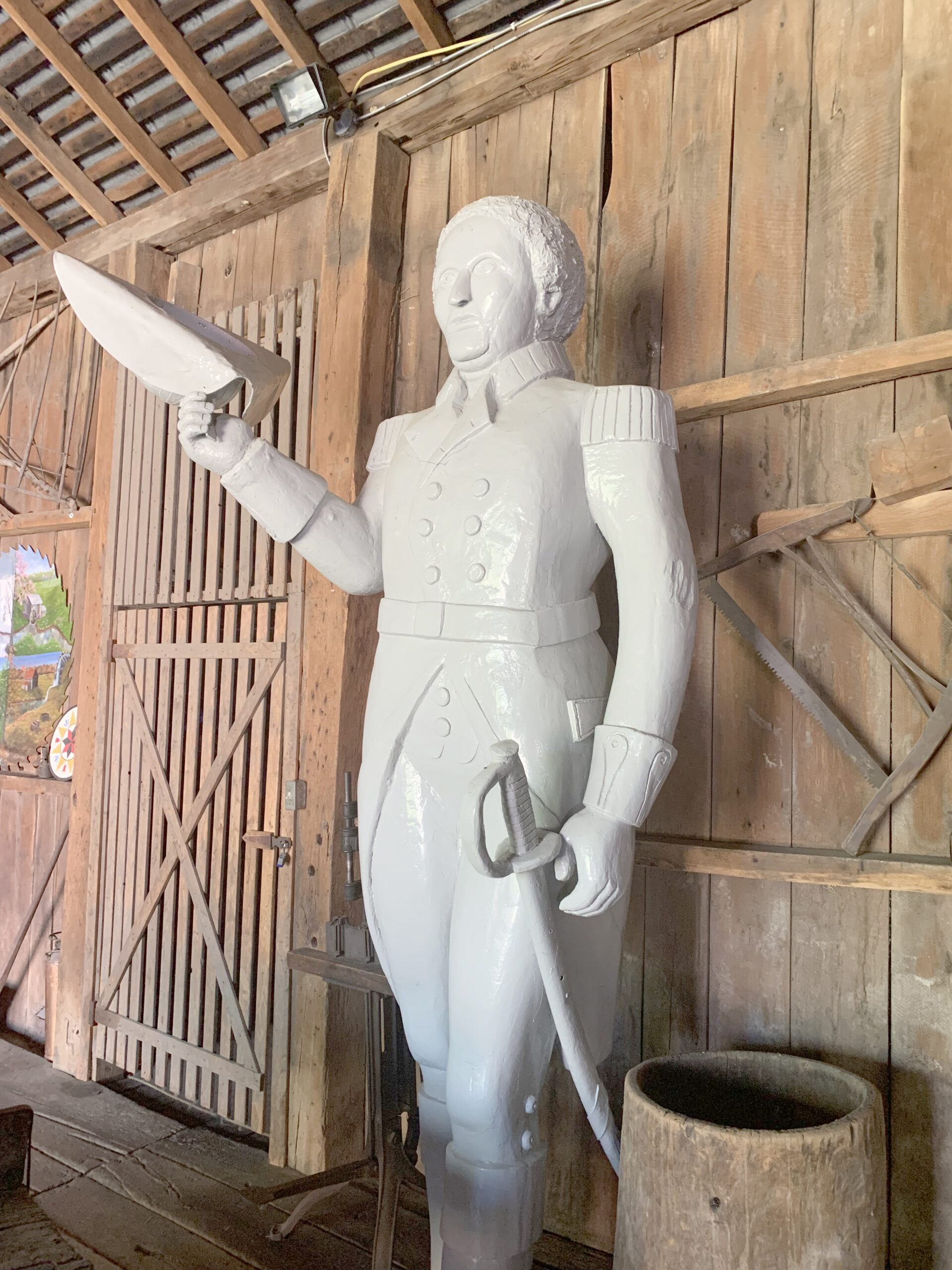In the late 1700s, it became apparent there was a sincere need to establish a new county in the very southwestern corner of the state of Pennsylvania. The early settlers were dissatisfied with the lengthy trip to Washington to conduct business. After years of attempts, on February 9, 1796, they split the southernmost portion of Washington County to form a new county. But what to name this county? Since it started as part of Washington County, they decided that there was no better name than Greene for the newly established County—to honor General Nathanael Greene, one of George Washington’s most trusted generals. From that point forward, General Nathanael Greene was forever linked to our small corner of the state.
In 1850, the present, and third, courthouse was built to serve the County of Greene’s judicial needs. This courthouse was built in a beautifully simplistic yet elegant Georgian design with a columned portico and a cupola on top, adorned by a statue of General Nathanael Greene.
The original statue of Nathanael Greene that sat upon the Courthouse cupola would watch over the town of Waynesburg for 75 years, until the courthouse was damaged by the Downey House fire in 1925, one of the most noteworthy and tragic events in the history of Waynesburg and Greene County.
The Downey House was a prominent hotel directly across the side street from the Courthouse. On the morning of December 23, 1925, around 3:30am, a fire was discovered in the Coney Island Restaurant inside the Downey House Hotel. This fire quickly engulfed the building, eventually spreading to the adjacent Grossman Building. Airborne embers made their way onto the roof of the Courthouse (just across Washington Street), setting it afire and causing a great deal of damage to the structure.
While five young men unfortunately lost their lives during the Downey House fire, the event showed the generous spirit of community the area had. Once news of the fire broke out, volunteer fire departments from East Washington, Charleroi, Fredericktown, Jefferson, Carmichaels, Buckeye Coal Company, Brownsville, Nemacolin, Rices Landing, Masontown and Bentleyville assisted. The Downey House fire also led to the establishment of the Waynesburg Volunteer Fire Company on March 4, 1926.
It was estimated that the Downey House Fire caused about one million dollars in damages. It forever changed the appearance of downtown Waynesburg and the area around the Courthouse. The Downey House Hotel was replaced by the Fort Jackson Hotel, which now serves as office space for the County of Greene.
Fortunately, the entire courthouse was not lost. The cupola and part of the roof structure of the Courthouse burned, including the original 1850 statue of General Nathanael Greene. In the fire’s aftermath, as restoration work on the courthouse began, John Pauley designed a replacement statue; Albert Wise, an employee of Acklin Lumber Company of Waynesburg, carved the design.
The Pauley statue served as watchman over Waynesburg for an additional seven decades. A statue carved from Greene County poplar by the late Miles Davin, Sr, replaced the Pauley statue. Davin restored the Pauley statue, and it now lives at the Greene County Historical Society Museum.
The statue of Greene is tipping his hat in an act of greeting, and local lore has it that Ol’ General Greene is tipping his hat out of respect to the lady perched atop the Soldiers & Sailors Memorial in Monument Park next to the Waynesburg University campus.
